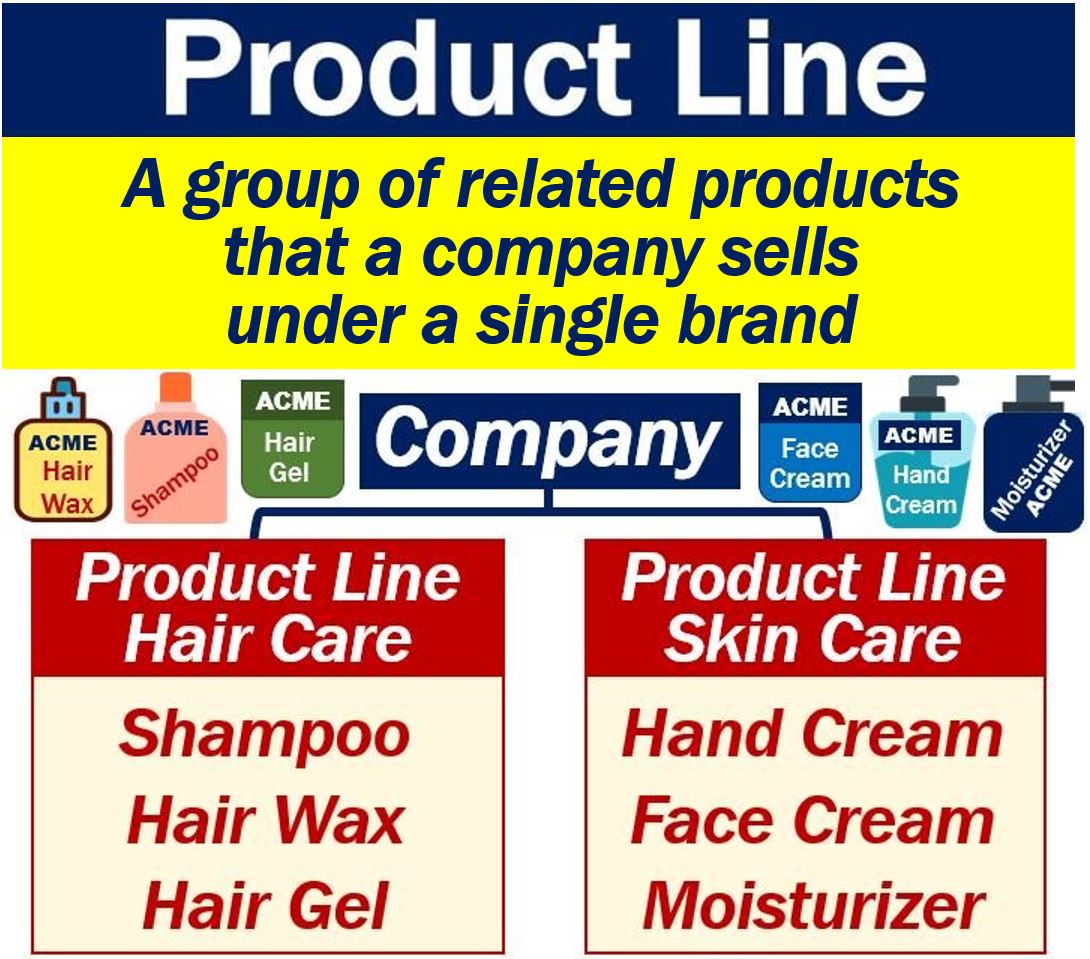A Product Line is a group of products that a company creates under a single brand. The products are similar and focus on the same market sector. Maybe their function or channel distribution are the same or similar. Perhaps their physical attributes, prices, quality, or type of customers are the same. We call the activity Product Lining.
A company can have more than one product line. The number of product lines it has reflects its resources, i.e., how powerful it is.
Expanding or narrowing a product line strategically can significantly impact a company’s market presence and consumer perception.
Product line numbers might also show the other players in the marketplace how competitive the company is. In this context, the term ‘marketplace’ means the same as ‘market’ in its abstract sense.
Competitive advantage
Marketing executives believe that product lines give companies a competitive advantage. When a business has a competitive advantage, it has an edge over its rivals.
When a company has many product lines and groups them together, it creates a product mix.

Product line – marketing
Product lines are often part of a marketing strategy. Companies keep adding more products to attract buyers. Specifically, they want to attract buyers who are familiar with the brand.
A marketing strategy exists when you combine all your marketing goals and objectives into one comprehensive plan.
For example, a company that has a product line in grooming and hair care might add a new line in personal care. A company that makes telecommunications software may introduce a new app for tracking a cell phone. Customers who already know the brand will be more willing to buy from their new line.
-
Product line manager
In most companies, the Product Line Manager supervises a product line. This person is in charge of determining what stays and what goes. In other words, which products to get rid of and which ones to add to the range.
-
Example
Let’s imagine, for example, that John Doe Inc. seeks to reach out to new customers. It may add more items to the line. We call this product line extension.
Let’s suppose John Doe Inc. produces cookies. It may want to reach out to new customers, so it adds sugar-free cookies to its line of products. It aims these new cookies at consumers with diabetes.
By doing this, John Doe Inc. will be extending its reach.
Procter & Gamble (P&G) is a good example of a company with several product lines. It has approximately 300 brands within its ten different product lines.
P&G has product lines in Baby Care, Family Care, Feminine Care, Fabric Care, Home Care, and Hair Care. It also has product lines in Personal Health Care, Grooming, Oral Care, and Skin and Personal Care.
Additionally, this strategy allows P&G to cater to a diverse range of consumer needs, fostering brand loyalty across multiple demographics.
Synonyms
There are many terms in Business English that mean the same (or similar to) “product line.” Here are ten of them, their meanings, and how we can use them in a sentence:
-
Product Range
A selection of different products offered by a company within the same category.
Example: “The company’s product range includes everything from basic office supplies to high-end business equipment.”
-
Product Assortment
The variety of products that a company makes available for customers.
Example: “Our product assortment has been expanded to include organic and gluten-free options.”
-
Product Series
A group of related products that are offered under a common theme or functionality.
Example: “The latest product series features eco-friendly packaging and sustainable materials.”
-
Product Family
A collection of products that are related in terms of their usage, target audience, or specifications.
Example: “The smartphone manufacturer announced a new product family with advanced security features.”
-
Product Portfolio
The complete set of products offered by a company across different markets and segments.
Example: “To address changing market demands, the company regularly reviews and updates its product portfolio.”
-
Product Collection
A curated group of products that are marketed together, often related by style, theme, or purpose.
Example: “This spring, our new product collection focuses on vibrant colors and lightweight materials.”
-
Brand Line
Products marketed under a specific brand within a company’s broader portfolio.
Example: “The luxury brand line is distinguished by its superior quality and exclusive designs.”
-
Merchandise Line
A range of products available for sale, especially in retail.
Example: “The store’s merchandise line was updated to include the latest trends in fashion.”
-
Line of Products
Another way to refer to a company’s range of products.
Example: “Our line of products now includes a series of smart home devices.”
-
Product Mix
The total assortment of products that a company offers to its customers.
Example: “The company’s product mix is designed to cater to a wide array of tastes and preferences, from budget to luxury options.”
